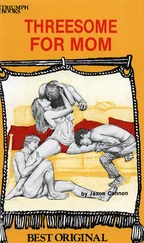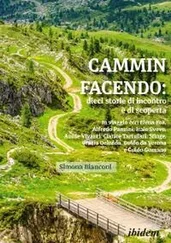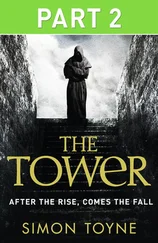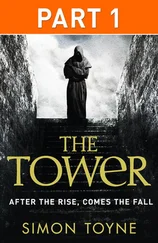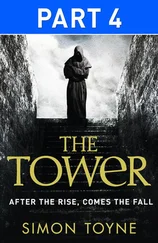Simon Foster - CHINA's Three Gorges & Xi'an
Здесь есть возможность читать онлайн «Simon Foster - CHINA's Three Gorges & Xi'an» весь текст электронной книги совершенно бесплатно (целиком полную версию без сокращений). В некоторых случаях можно слушать аудио, скачать через торрент в формате fb2 и присутствует краткое содержание. Год выпуска: 2010, Издательство: Hunter, Жанр: Старинная литература, на английском языке. Описание произведения, (предисловие) а так же отзывы посетителей доступны на портале библиотеки ЛибКат.
- Название:CHINA's Three Gorges & Xi'an
- Автор:
- Издательство:Hunter
- Жанр:
- Год:2010
- ISBN:нет данных
- Рейтинг книги:4 / 5. Голосов: 1
-
Избранное:Добавить в избранное
- Отзывы:
-
Ваша оценка:
- 80
- 1
- 2
- 3
- 4
- 5
CHINA's Three Gorges & Xi'an: краткое содержание, описание и аннотация
Предлагаем к чтению аннотацию, описание, краткое содержание или предисловие (зависит от того, что написал сам автор книги «CHINA's Three Gorges & Xi'an»). Если вы не нашли необходимую информацию о книге — напишите в комментариях, мы постараемся отыскать её.
CHINA's Three Gorges & Xi'an — читать онлайн бесплатно полную книгу (весь текст) целиком
Ниже представлен текст книги, разбитый по страницам. Система сохранения места последней прочитанной страницы, позволяет с удобством читать онлайн бесплатно книгу «CHINA's Three Gorges & Xi'an», без необходимости каждый раз заново искать на чём Вы остановились. Поставьте закладку, и сможете в любой момент перейти на страницу, на которой закончили чтение.
Интервал:
Закладка:
Styles
Although there are hundreds of styles, Chinese martial arts can generally be categorized into two broad forms, which tie in with the Taoist concept of yin and yang (see Taoism ). There are hard, or external, forms that focus on yang , or male, aspects and involve speed, muscular strength and aggression; and soft, or internal, styles that correspond to the yin (female) and stress the movement of qi (energy) to overcome opponents. The line between hard and soft is not always clear, something which is evident in the dichotomy within two of the most influential styles: shaolinquan (Shaolin Fist) from the Buddhist monastery in Henan is a hard form, which nevertheless utilizes the soft art of qigong (breath control); while wudangquan (you guessed it, Wudang Fist), a soft style from the Taoist retreats of Hubei, contains elements of external forms and is famous for its sword play. What is certain is that to attain the true skills of either an internal or external form, incredible physical and mental conditioning is required, whether achieved through painful exercises such as repeatedly striking wood and brick, or by intense meditation and breathing techniques.
Tai Chi
Taijiquan (Great Eternal Fist) takes its name from the taiji , the Taoist yinyang symbol, and is the world's most popular martial art (although its gentle, graceful style runs contrary to many people's perception of the term "martial art”). It is an internal form that uses slow, cyclical movements to promote energy flow, circulation and a sense of well being. Traditionally practiced by older Chinese, tai chi is becoming increasingly popular in the West. It is probably the easiest martial art to engage in, even on a short trip, as you can see it every morning in almost any park in China. You can simply watch, but you'll frequently find yourself being invited to participate! Even if you don't manage to master the moves, you'll have had a truly Chinese experience and had a little exercise at the same time.
Studying Martial Arts
Many foreigners come to China to study martial arts and the most famous center is Shaolin, although the commercialization and plethora of copycat schools at the "home of kung fu” can come as something of a disappointment. Wudang Shanmakes for a more low-key, but equally historic alternative, but if you're serious about study, knowing which style you wish to learn will help you decide where to go. You can arrange private or group instruction, whether for a few hours or a few months, in many of the places covered in this book. Yangshuomakes for a particularly accessible and attractive place to study. Obviously, having an English-speaking teacher makes learning easier, but, as instruction tends to be quite demonstrative, this isn't as much of a problem as you might think. For more information about long-term study in China check www.educasian.com and www.shaolins.com.
Film
Chow Yun Fat is said to be one of the most recognizable movie stars in the world simply because of his importance to the billion-strong Chinese cinema audience and this gives some insight into the scale and scope of movies in modern China. Movie-making in China has a checkered history and one that reflects and often portrays the events of the time. From early on, China's political situation dictated that production was split into three geographical areas and mainland China, Hong Kong (see Kung Fu Flicks ) and Taiwan have all developed along their own lines.
The Beginnings
Film in China saw a promising start in Shanghai, though during the early years Beijing Opera was the focus of almost all movies. In the 1920s American expertise was called upon and overseas influences continued to play a part in Chinese film production until the Japanese invasion. In the 1930s Shanghai studios such as the Mingxing and Lianhua produced a string of silent, often anti-Imperialist movies like Spring Silk Worm (1933) and The Goddess (1934), which saw the rise to fame of China's first movie stars, notably the glamorous Ruan Lingyu. In 1942 Japanese occupation put an end to the Shanghai studios, which pushed production into the nationalist and Communist regions inland, as well as to Hong Kong. Once the Japanese had left in 1945 production started up again and Spring River Flows East (1947), which highlighted the suffering of the masses while the elites luxuriated in their wealth, became one of the most popular movies of this period.
Repression under Communism
Unfortunately, as soon as production re-started in earnest, movies became heavily censored during the early years of communism. The party began to harness the potential of film as a propaganda medium. Students were sent to be trained in movie-making in Moscow, and the Beijing Film Academy was opened in 1956. While America was enjoying a golden era of the big screen, most Chinese movies of the time were jingoistic stories promoting the glory of communism. Despite the storylines, it was this time that really saw the Chinese start going to the movies. But as time went on, the Communist government further tightened its reins and the Cultural Revolution (see History ) saw Chinese moviemaking at an all-time low
The Fifth Generation
In the 1980s things finally opened up with the Fifth Generation of film-makers, so-called for the number of generations since the 1949 Revolution. Chen Kaigeis seen as having started the ball rolling with his 1984 film Yellow Earth , which painted a beautiful but bleak picture of the futility of Communist ideology, quickly provoking controversy with the government. Zhang Yimou, who worked the camera on Yellow Earth , soon followed with his own movie, Red Sorghum , in 1986. The "revolutionary” sentiments of this movie went some way to appeasing officialdom and he went on to score more successes, including Judou (1990) and Raise the Red Lantern (1991), both of which star the exquisite Gong Li. Most recently, Zhang has made a foray into the kung fu scene with Hero (see Kung Fu Flicks , below) and The House of Flying Daggers (2004), and he has been busy on other projects. Gong Li also features in another of Chen Kaige's movies, Farewell My Concubine (1993), considered to be his finest work. The story is again indicative of the troubles of the time, told through the lives of two Beijing Opera performers, and its tragic ending wasn't well received by the authorities.
The Sixth Generation
The Tian'anmen Square crackdown sent ripples in all directions and film was not excluded. Many Fifth Generation movies had been critically acclaimed overseas and in the mid-1990s this group seemed to shift their focus to foreign audiences. Today the cutting edge of film in China rests with a new breed of gritty, urban underground directors, loosely labeled the Sixth Generation. Movies like Zhang Yuan's Beijing Bastards (1993), which stars China's undisputed king of rock, Cui Jian, and Wang Xiaoshuai's Beijing Bicycle (2001), have a nervy realness to them, and depict the city as they see it, warts and all. Obviously, this generation of directors has fared even worse than their predecessors with the government and sadly many of these telling tales cannot be seen in mainland movie theaters.
Hong Kong & Taiwan
Hong Kong has principally focused on martial arts movies, but has also produced outstanding directors such as Wong Kar-wai, who was actually born in Shanghai, and is responsible for the urban love classic Chungking Express (1994). Taiwan's movie industry first developed under the Japanese and then passed through a number of phases, from early escapism through to the growing pains of the island's rapid industrial development. Although the Taiwanese film industry has suffered from the increasing popularity of Hollywood movies, the island has produced the Chinese world's most famous director, Ang Lee, whose epic Crouching Tiger, Hidden Dragon (2000) received worldwide acclaim. He has subsequently successfully shifted from Eastern to Western, with his Oscar-winning film, Brokeback Mountain (2005).
Читать дальшеИнтервал:
Закладка:
Похожие книги на «CHINA's Three Gorges & Xi'an»
Представляем Вашему вниманию похожие книги на «CHINA's Three Gorges & Xi'an» списком для выбора. Мы отобрали схожую по названию и смыслу литературу в надежде предоставить читателям больше вариантов отыскать новые, интересные, ещё непрочитанные произведения.
Обсуждение, отзывы о книге «CHINA's Three Gorges & Xi'an» и просто собственные мнения читателей. Оставьте ваши комментарии, напишите, что Вы думаете о произведении, его смысле или главных героях. Укажите что конкретно понравилось, а что нет, и почему Вы так считаете.



